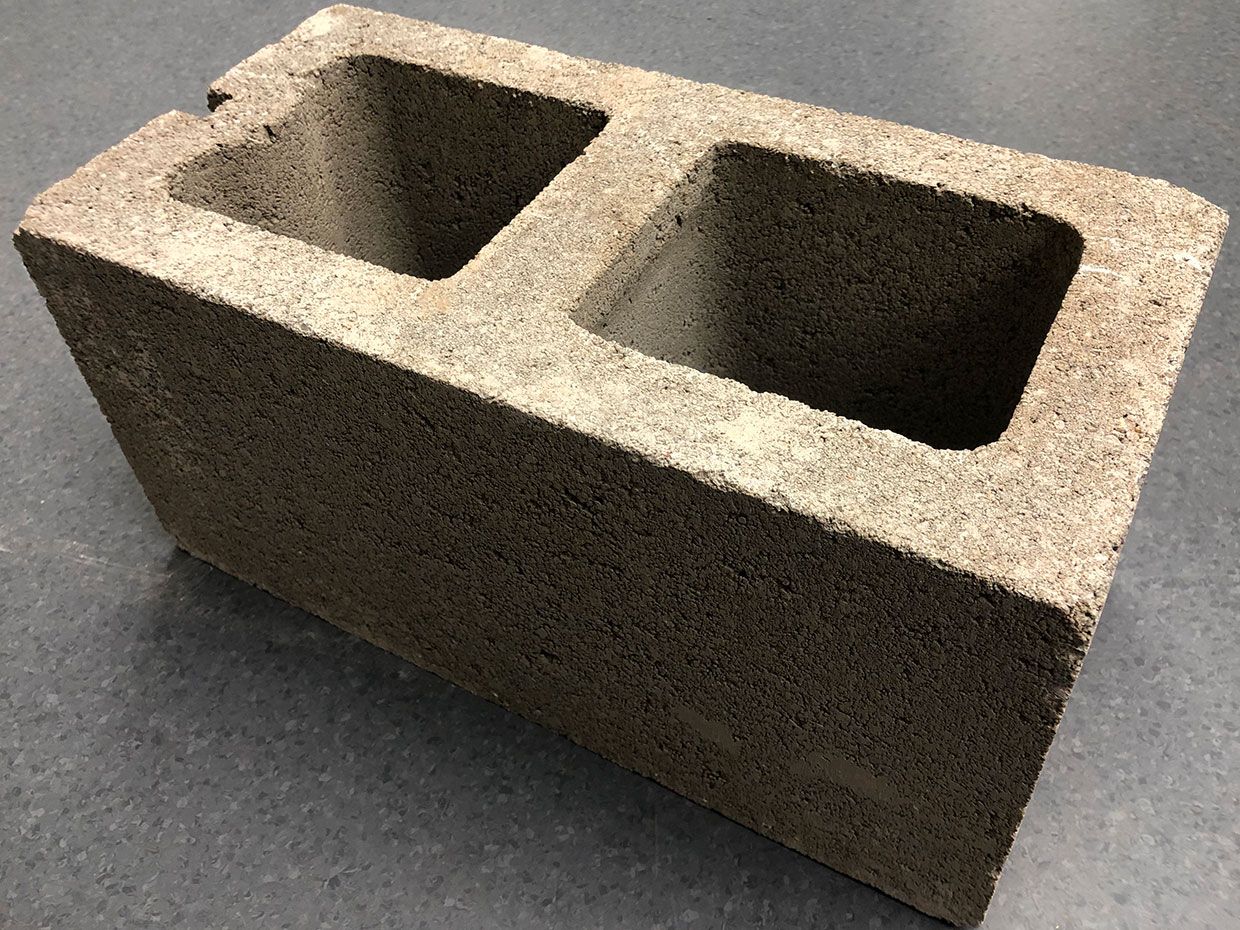Capture Carbon in Concrete Made With CO2
On a vast grassy field in northern Wyoming, a coal-fired power plant will soon do more than generate electricity. The hulking facility will also create construction materials by supplying scientists with carbon dioxide from its exhaust stream.
A team from the University of California, Los Angeles, has developed a system that transforms "waste CO2" into gray blocks of concrete. In March, the researchers will relocate to the Wyoming Integrated Test Center, part of the Dry Fork power plant near the town of Gillette. During a three-month demonstration, the UCLA team plans to siphon half a ton of CO2 per day from the plant's flue gas and produce 10 tons of concrete daily.
"We're building a first-of-a-kind system that will show how to do this at scale," said Gaurav Sant, a civil engineering professor who leads the team.
Carbon Upcycling UCLA is one of 10 teams competing in the final round of the NRG COSIA Carbon XPrize. The global competition aims to develop breakthrough technologies for converting carbon emissions into valuable products. Four more finalists are demonstrating projects in Wyoming, including CarbonCure, a Canadian startup making greener concrete, and Carbon Capture Machine, a Scottish venture focused on building materials. (Five other teams are competing at a natural gas plant in Alberta, Canada.)
Worldwide, hundreds of companies and research groups are working to keep CO2 out of the atmosphere and store it someplace else-including in deep geologic formations, soils, soda bubbles, and concrete blocks. By making waste CO2 into something marketable, entrepreneurs can begin raising revenues needed to scale their technologies, said Giana Amador, managing director of Carbon180, a nonprofit based in Oakland, California.
The potential global market for waste-CO2 products could be $5.9 trillion a year, of which $1.3 trillion includes cements, concretes, asphalts, and aggregates, according to Carbon180 [PDF]. Amador noted the constant and growing worldwide demand for building materials, and a rising movement within U.S. states and other countries to reduce construction-related emissions.
Cement, a key ingredient in concrete, has a particularly big footprint. It's made by heating limestone with other materials, and the resulting chemical reactions can produce significant CO2 emissions. Scorching, energy-intensive kilns add even more. The world produces 4 billion tons of cement every year, and as a result, the industry generates about 8 percent of global CO2 emissions, according to think tank Chatham House.
 Photo: UCLA/CO2Concrete A concrete block made using UCLA's carbon-to-concrete system.
Photo: UCLA/CO2Concrete A concrete block made using UCLA's carbon-to-concrete system. The cement industry is one that's really difficult to decarbonize, and we don't have a lot of cost-effective solutions today," Amador said. Carbon "utilization" projects, she added, can start to fill that gap.
The UCLA initiative began about six years ago, as researchers contemplated the chemistry of Hadrian's Wall-the nearly 1,900-year-old Roman structure in northern England. Masons built the wall by mixing calcium oxide with water, then letting it absorb CO2 from the atmosphere. The resulting reactions produced calcium carbonate, or limestone. But that cementation process can take years or decades to complete, an unimaginably long wait by today's standards. "We wanted to know, 'How do you make these reactions go faster?'" Sant recalled.
The answer was portlandite, or calcium hydroxide. The compound is combined with aggregates and other ingredients to create the initial building element. That element then goes into a reactor, where it comes in contact with the flue gas coming directly out of a power plant's smokestack. The resulting carbonation reaction forms a solid building component akin to concrete.
Sant likened the process to baking cookies. By tinkering with the ingredients, curing temperatures, and the flow of CO2, they found a way to, essentially, transform the wet dough into baked goods. "You stick it in a convection oven, and when they come out they're ready to eat. This is exactly the same," he said.
 Illustration: UCLA/CO2Concrete Carbon Upcycling UCLA takes carbon dioxide directly from a coal plant's exhaust stream and transforms it into concrete building blocks.
Illustration: UCLA/CO2Concrete Carbon Upcycling UCLA takes carbon dioxide directly from a coal plant's exhaust stream and transforms it into concrete building blocks. The UCLA system is unique among green concrete technologies because it doesn't require the expensive step of capturing and purifying CO2 emissions from power plants. Sant said his team's approach is the only one so far that directly uses the flue gas stream. The group has formed a company, CO2Concrete, to commercialize their technology with construction companies and other industrial partners.
After Wyoming, Sant and colleagues will dismantle the system and haul it to Wilsonville, Alabama. Starting in July, they'll repeat the three-month pilot at the National Carbon Capture Center, a research facility sponsored by the U.S. Department of Energy.
The UCLA team will learn in September if they've won a $7.5 million Carbon XPrize, though Sant said he's not fretting about the outcome. "Winning is great, but what we're really focused on is making a difference and [achieving] commercialization," he said.